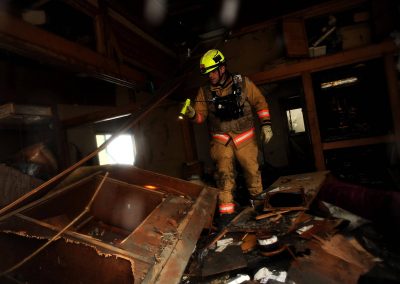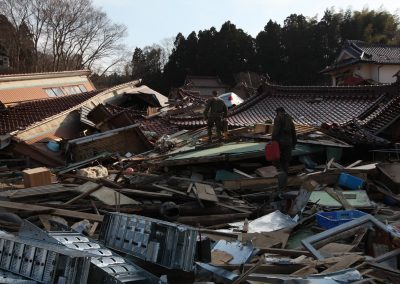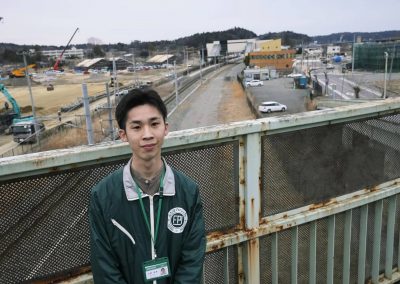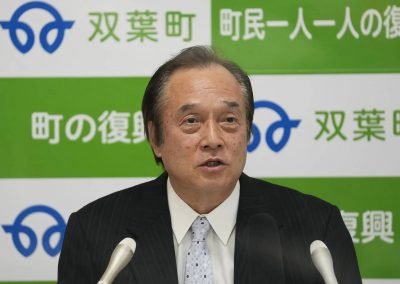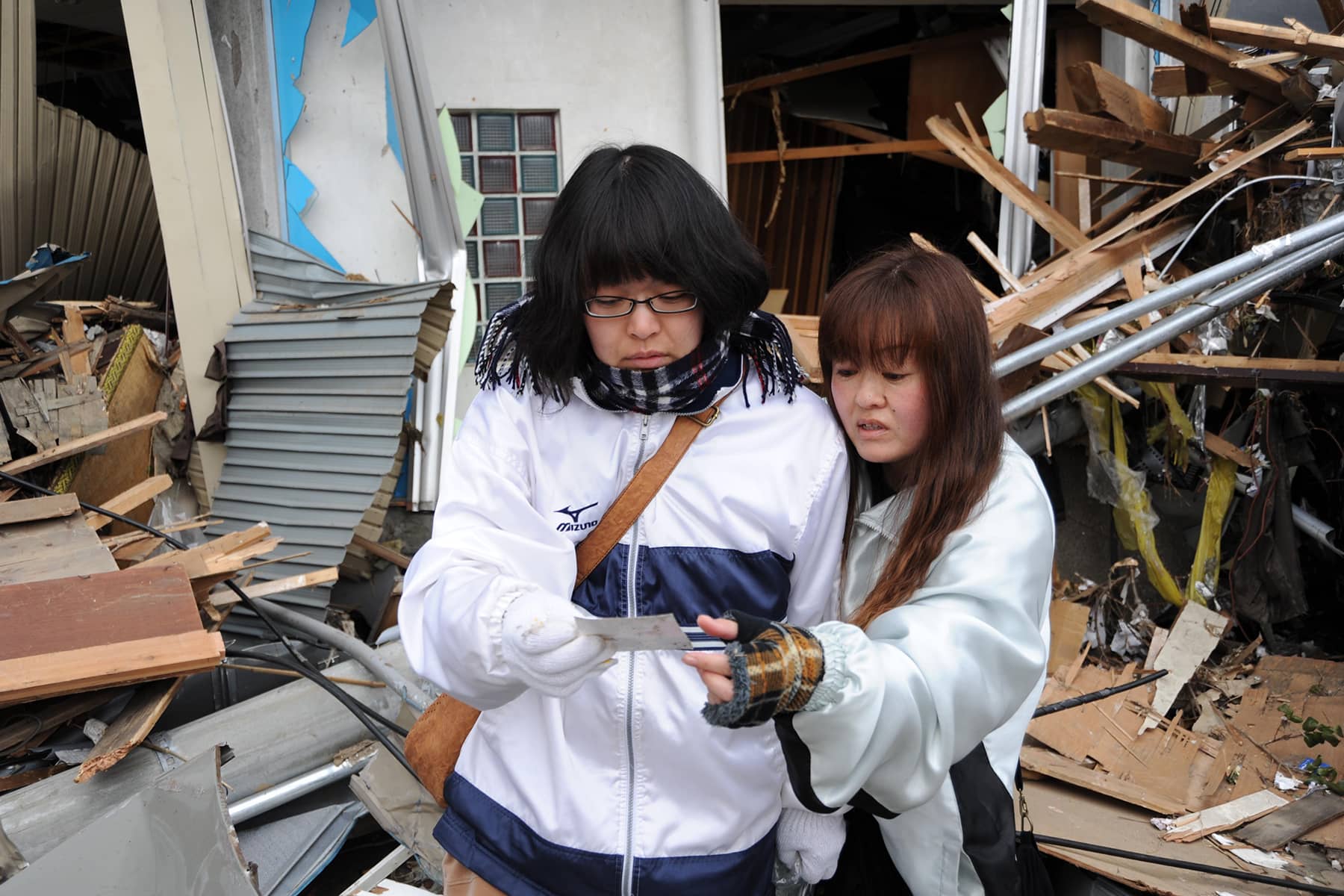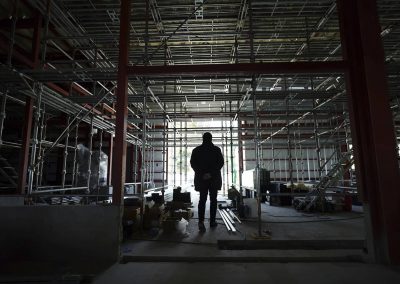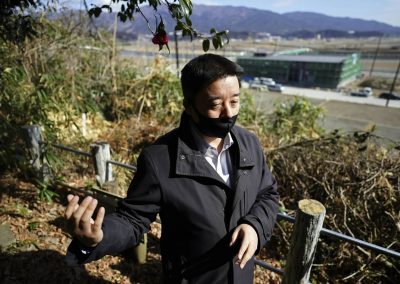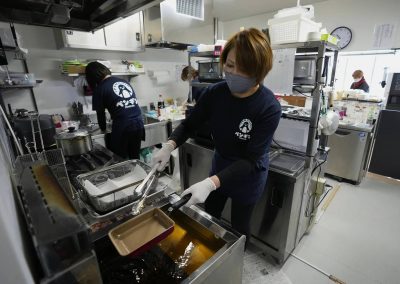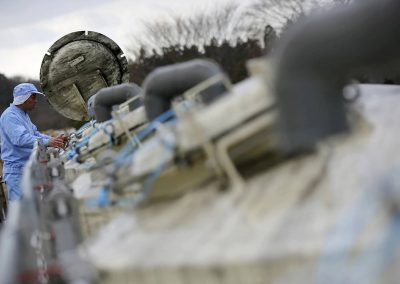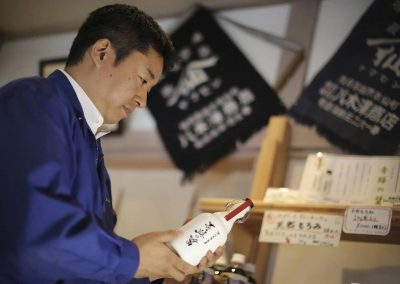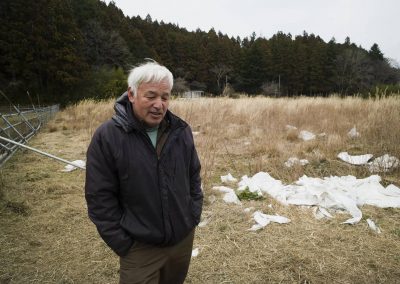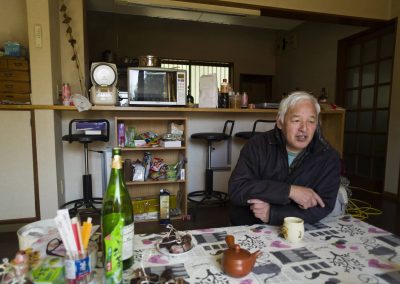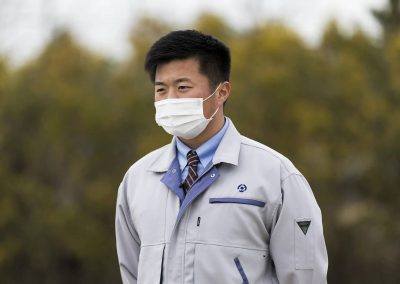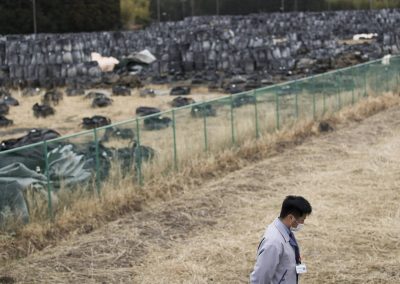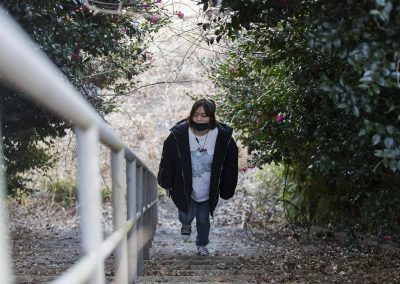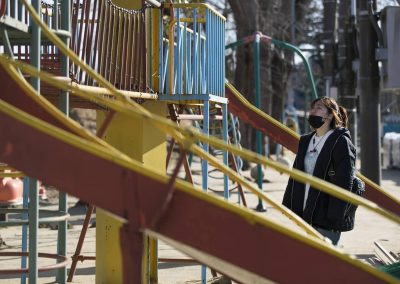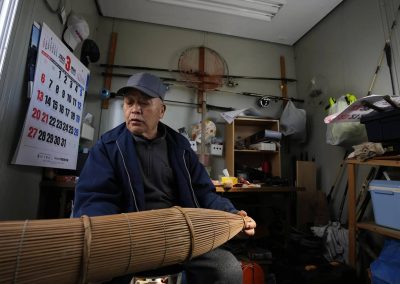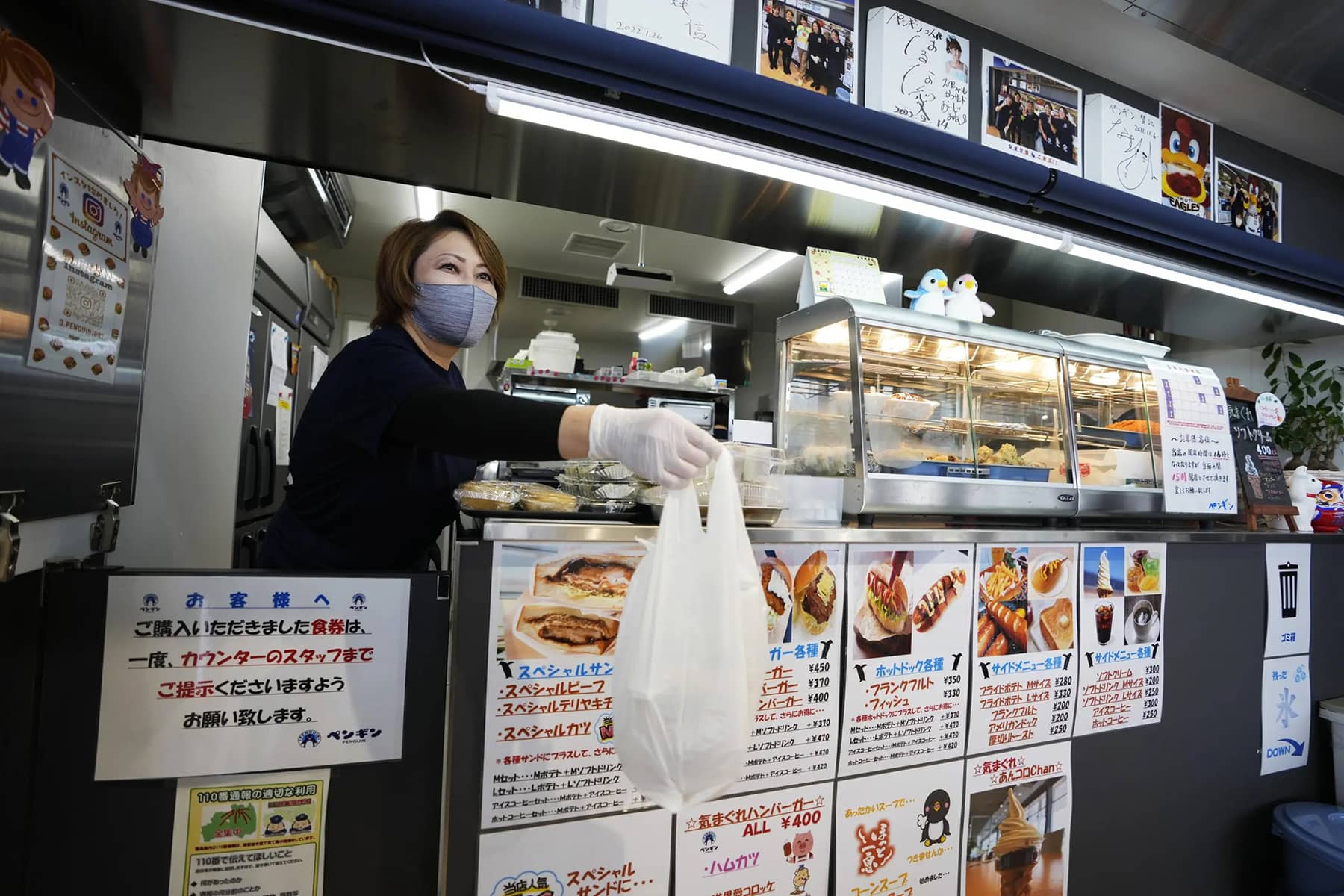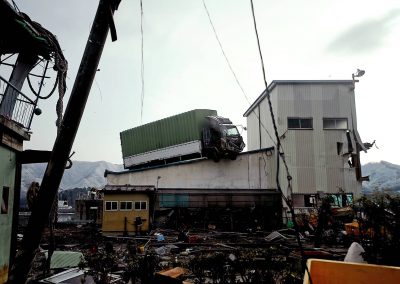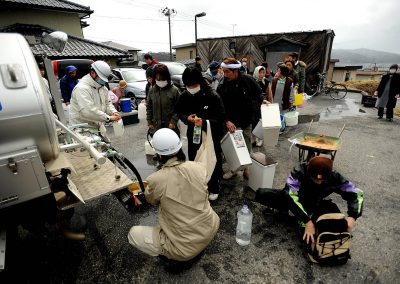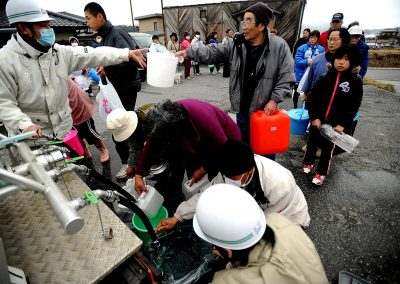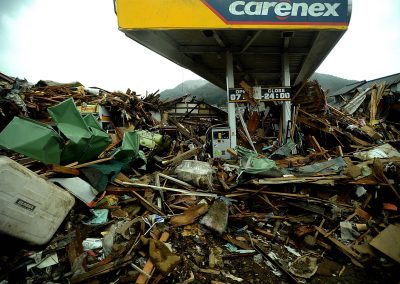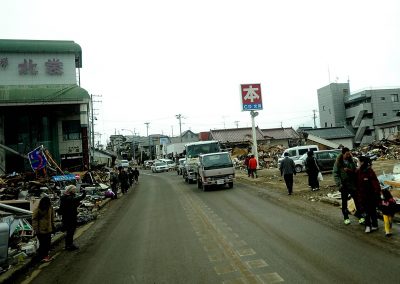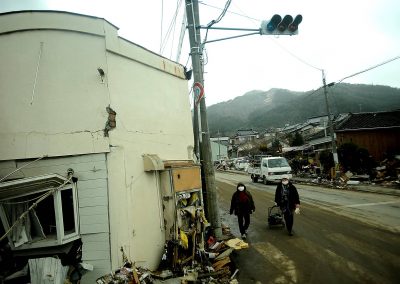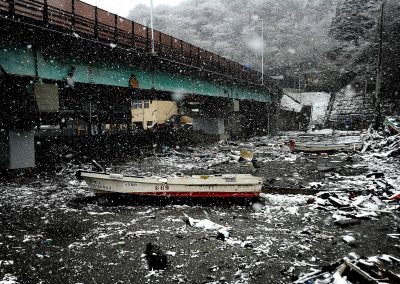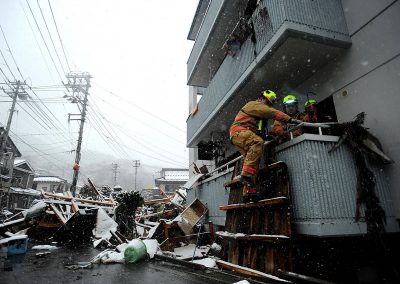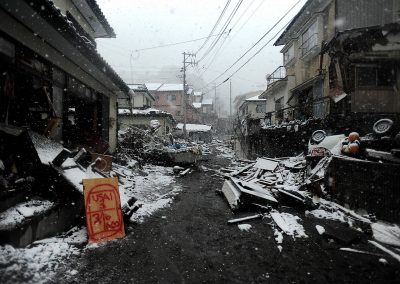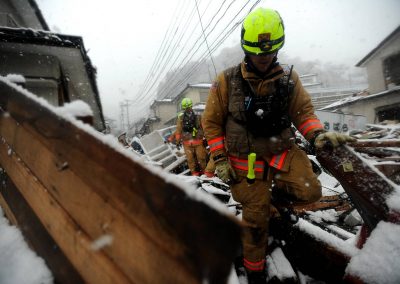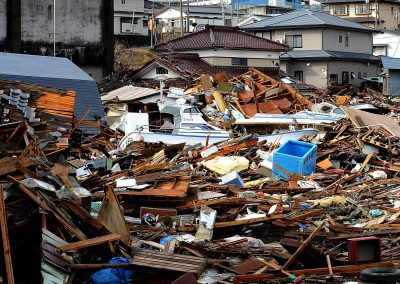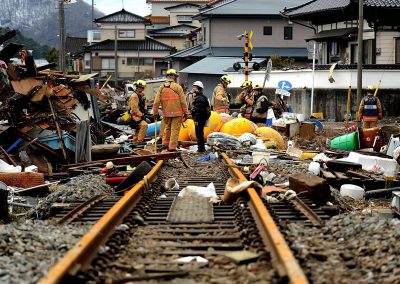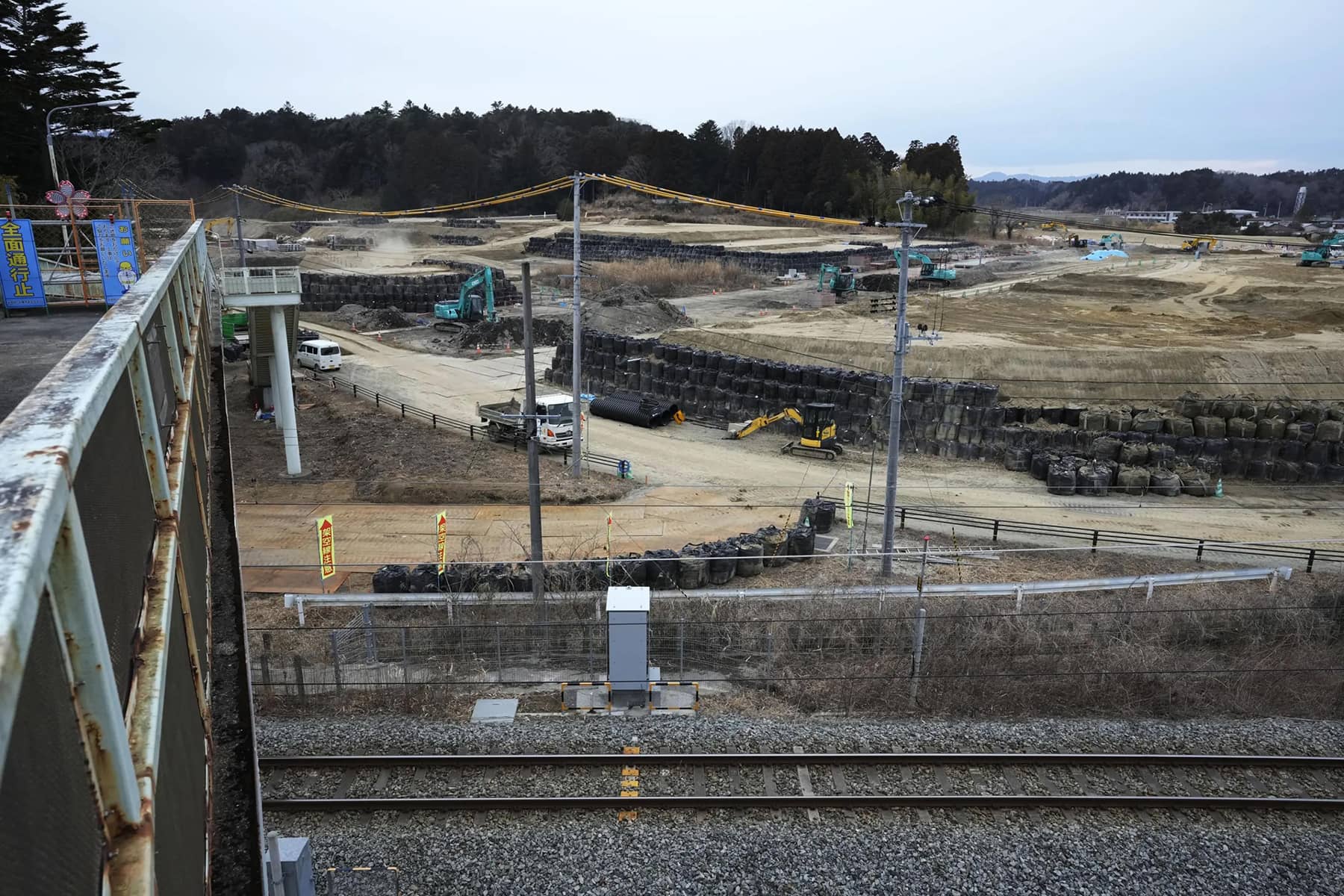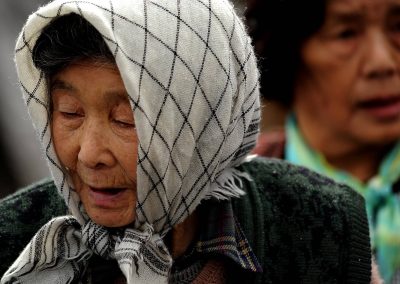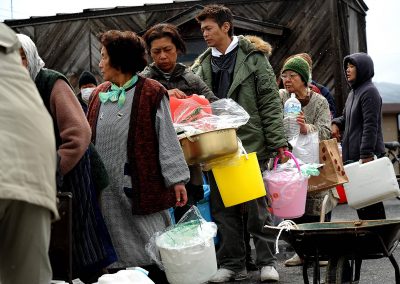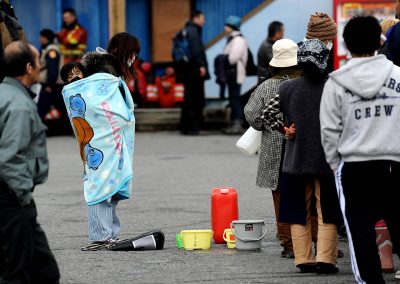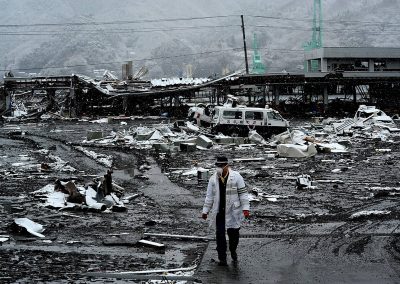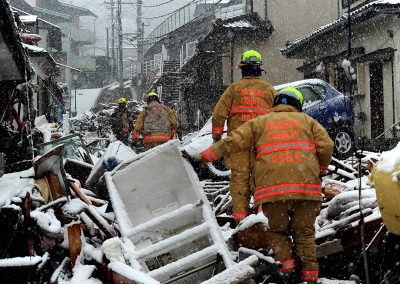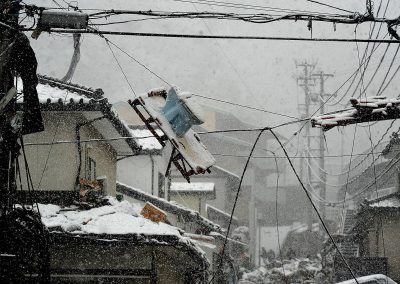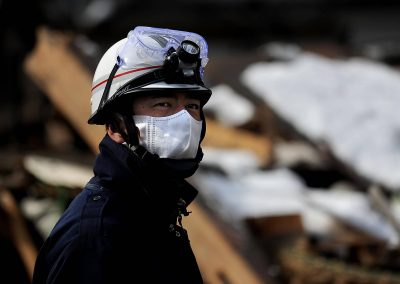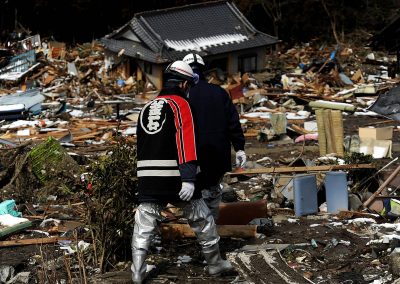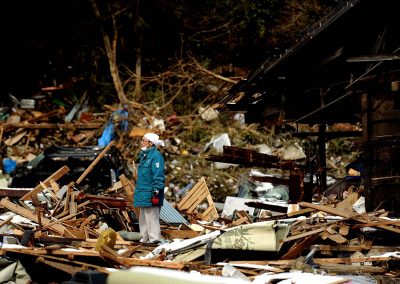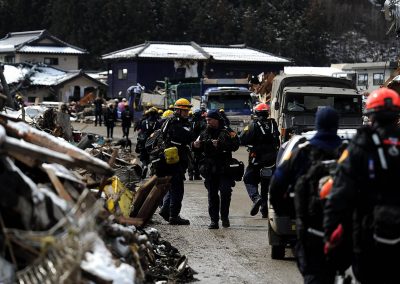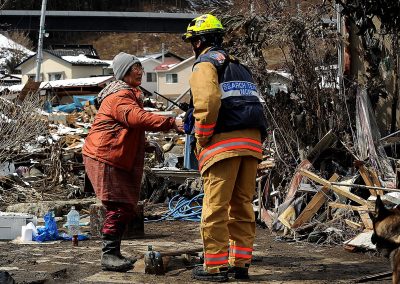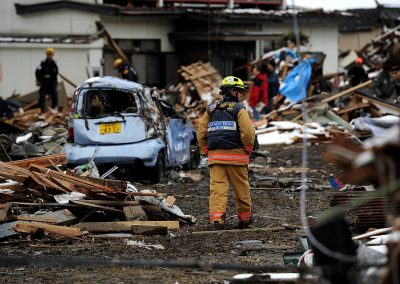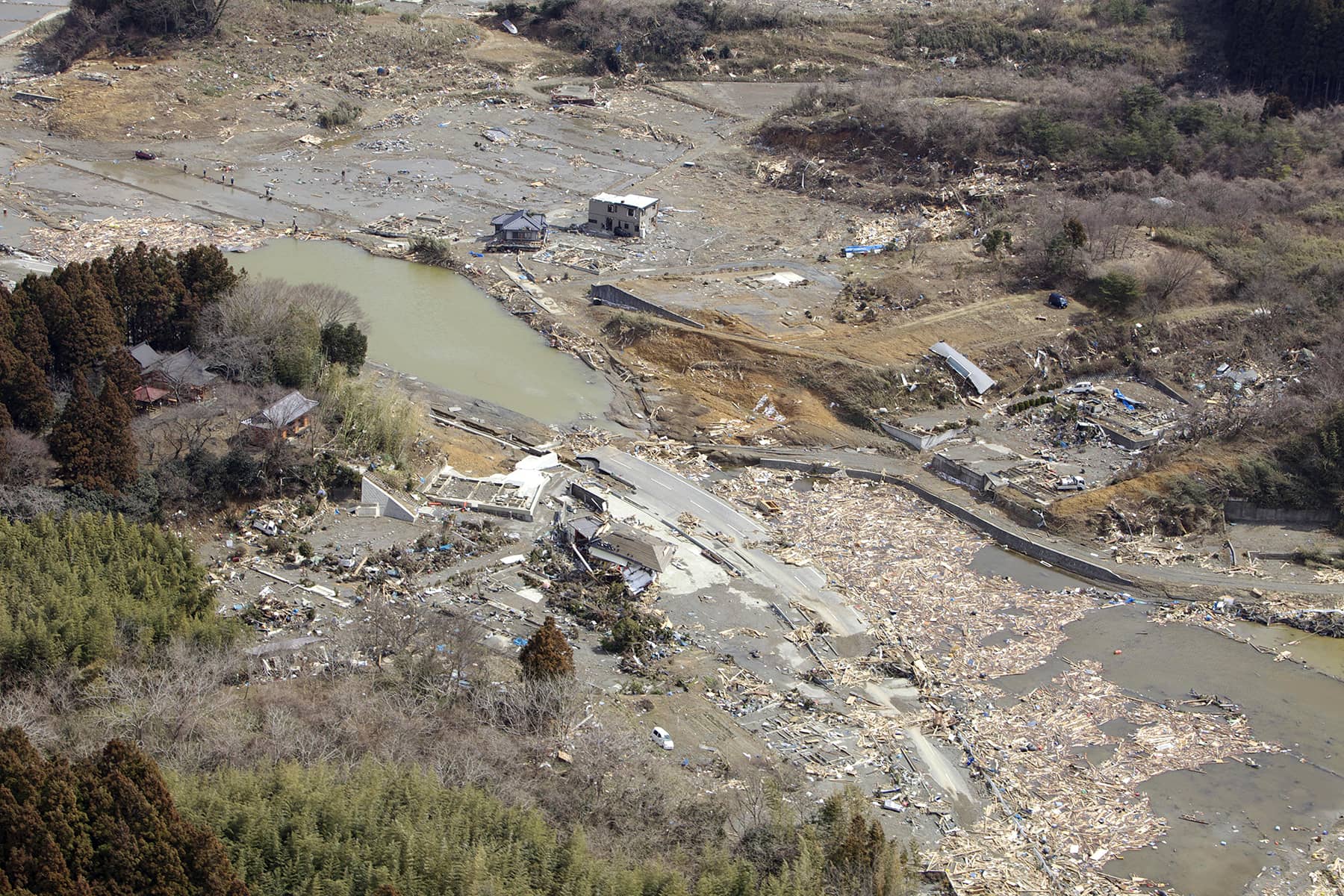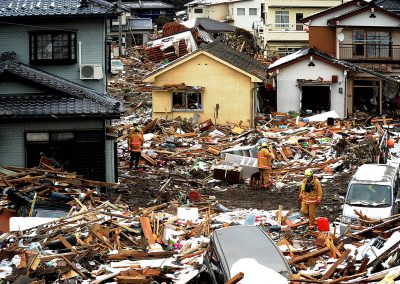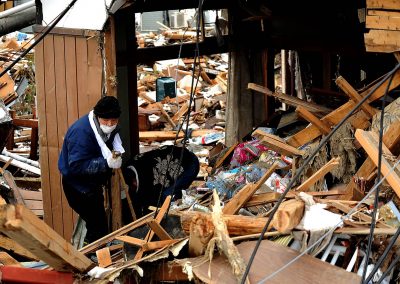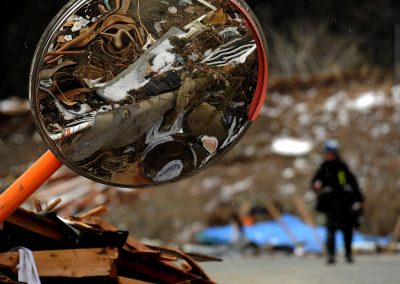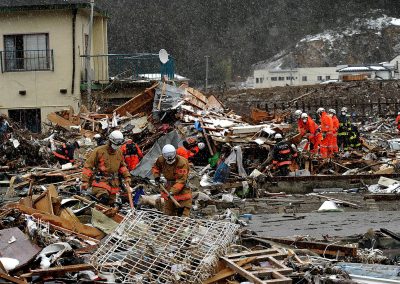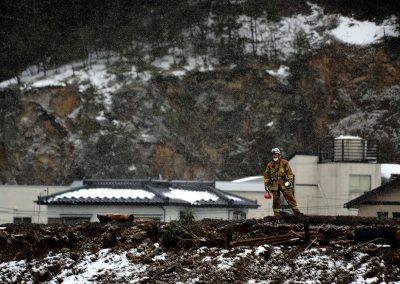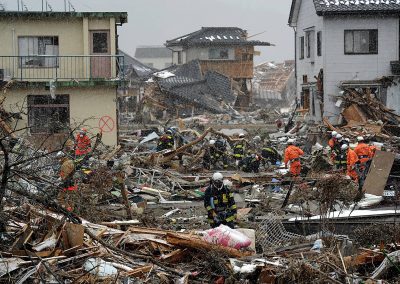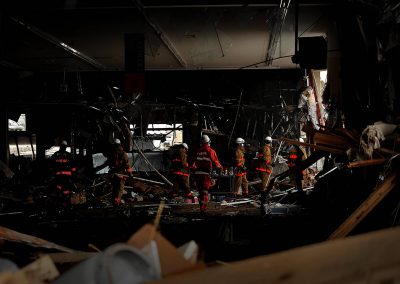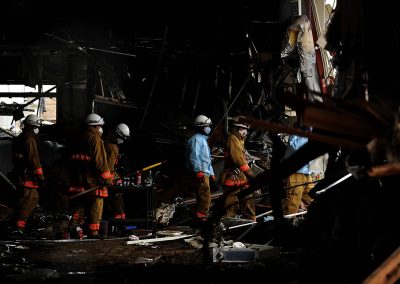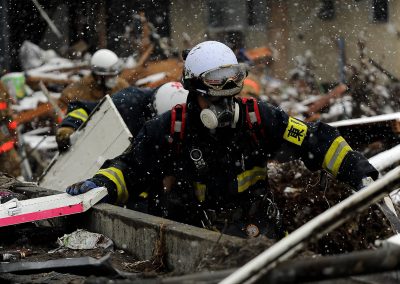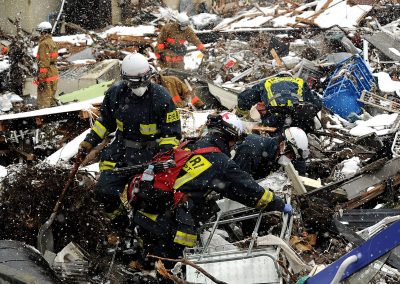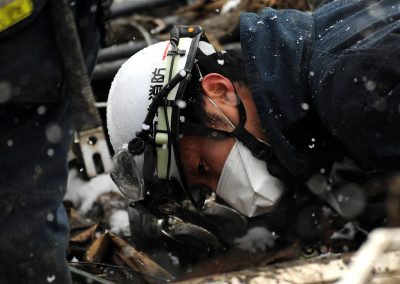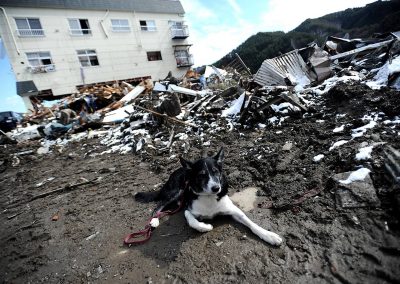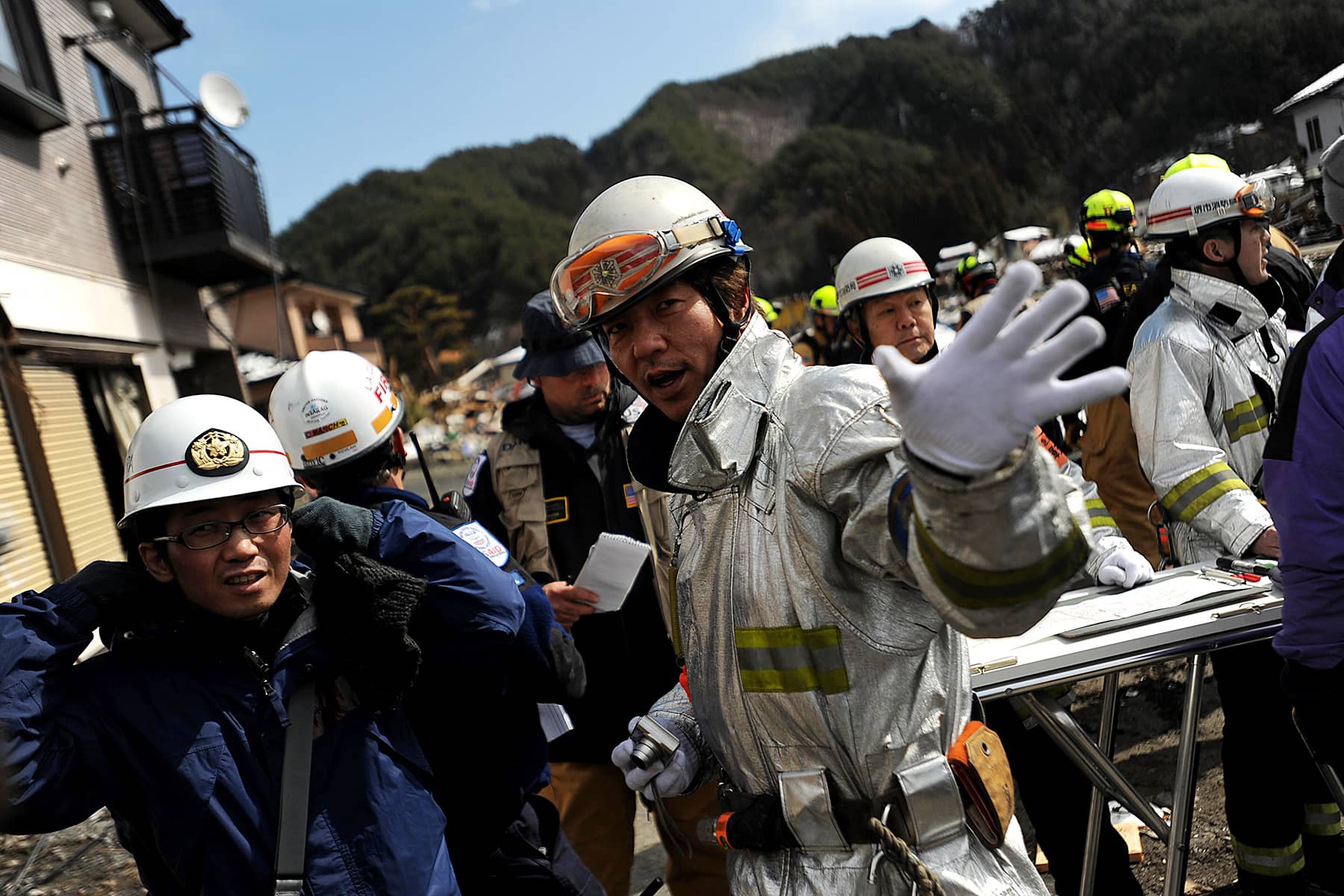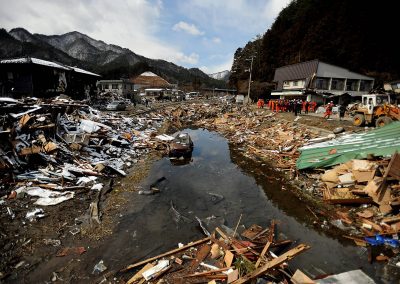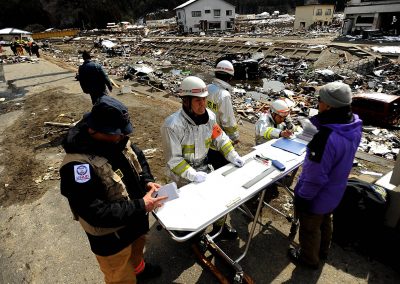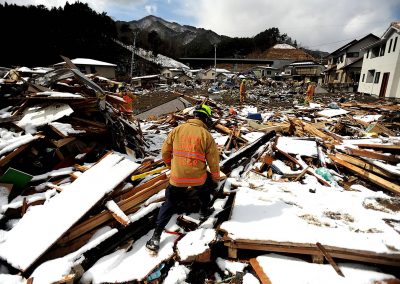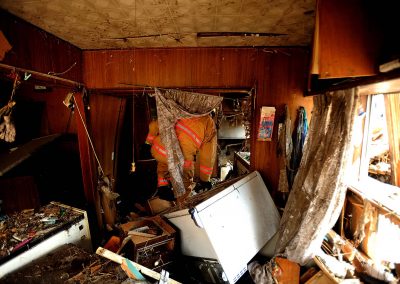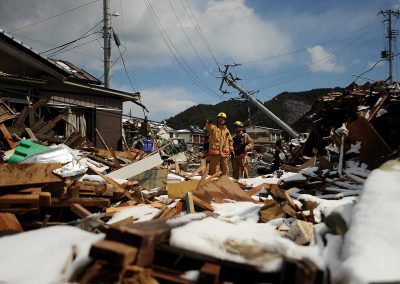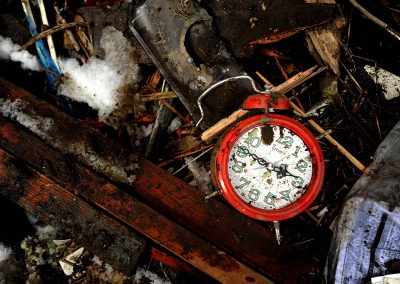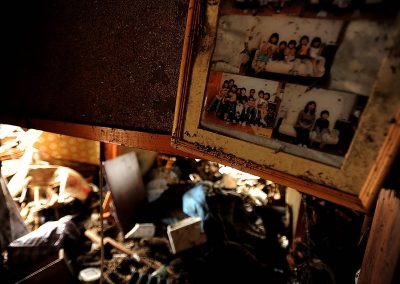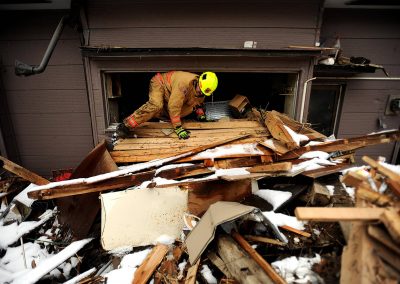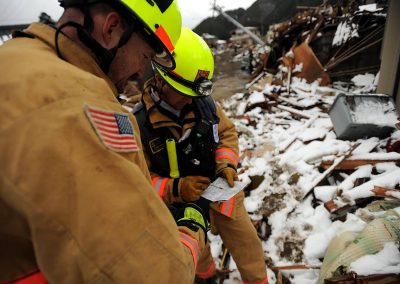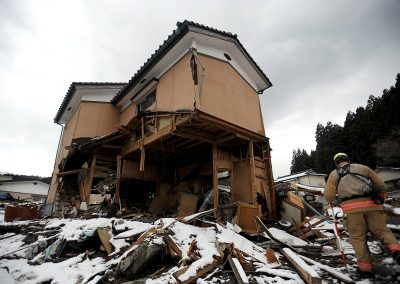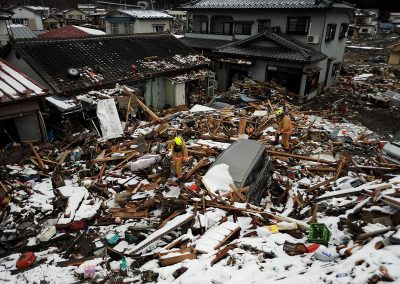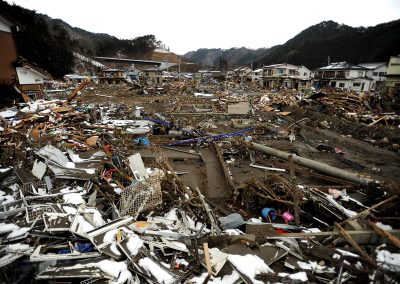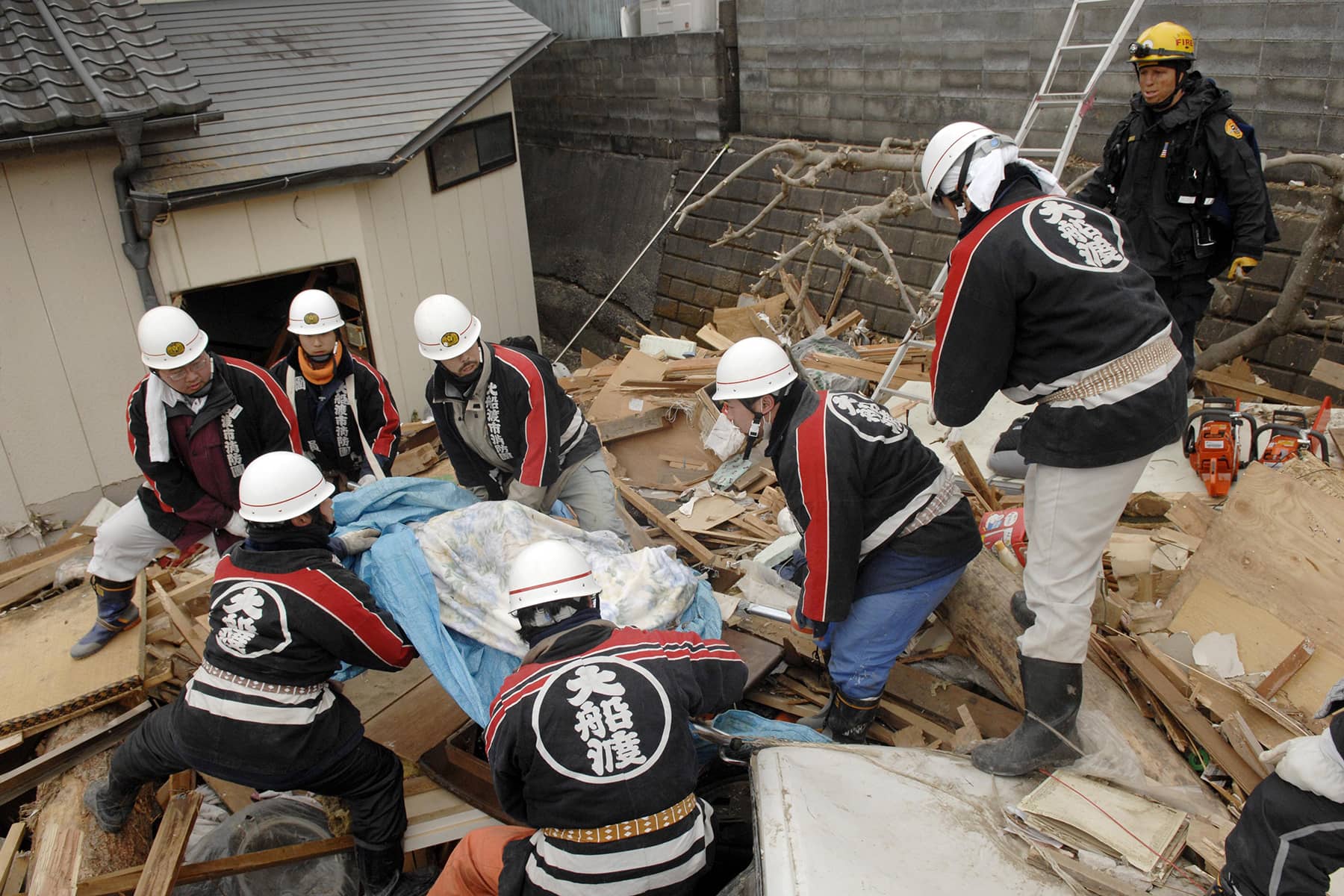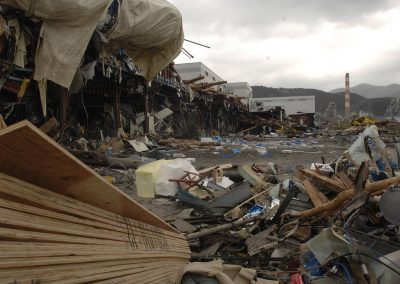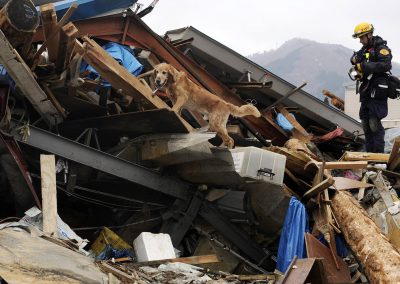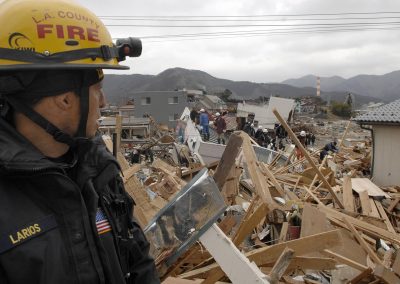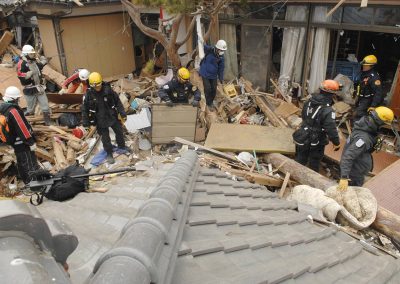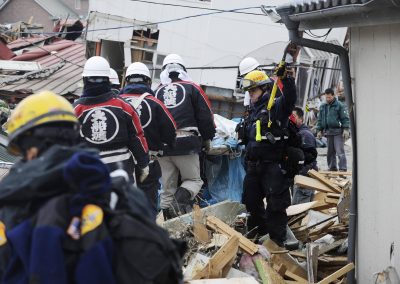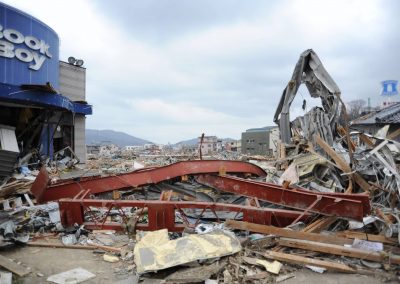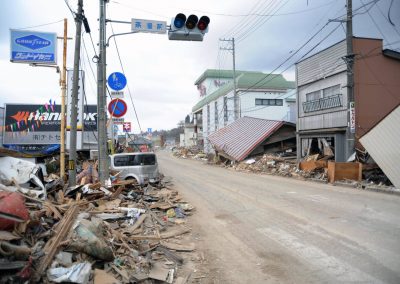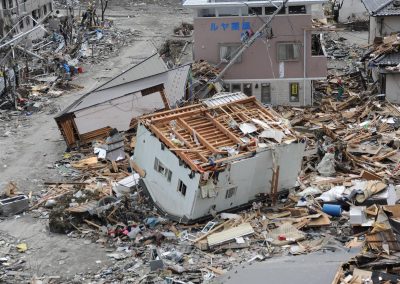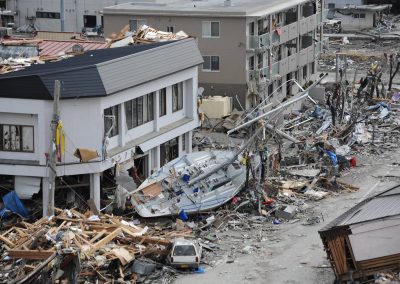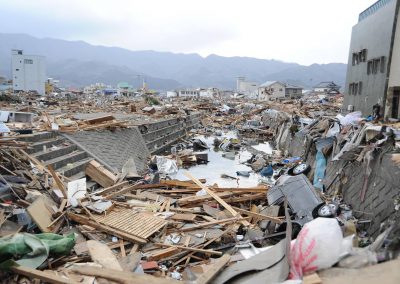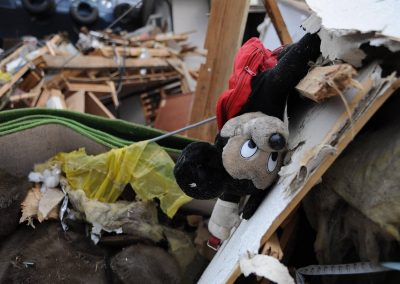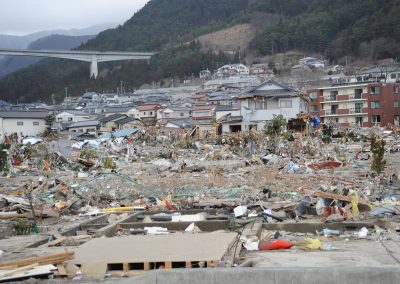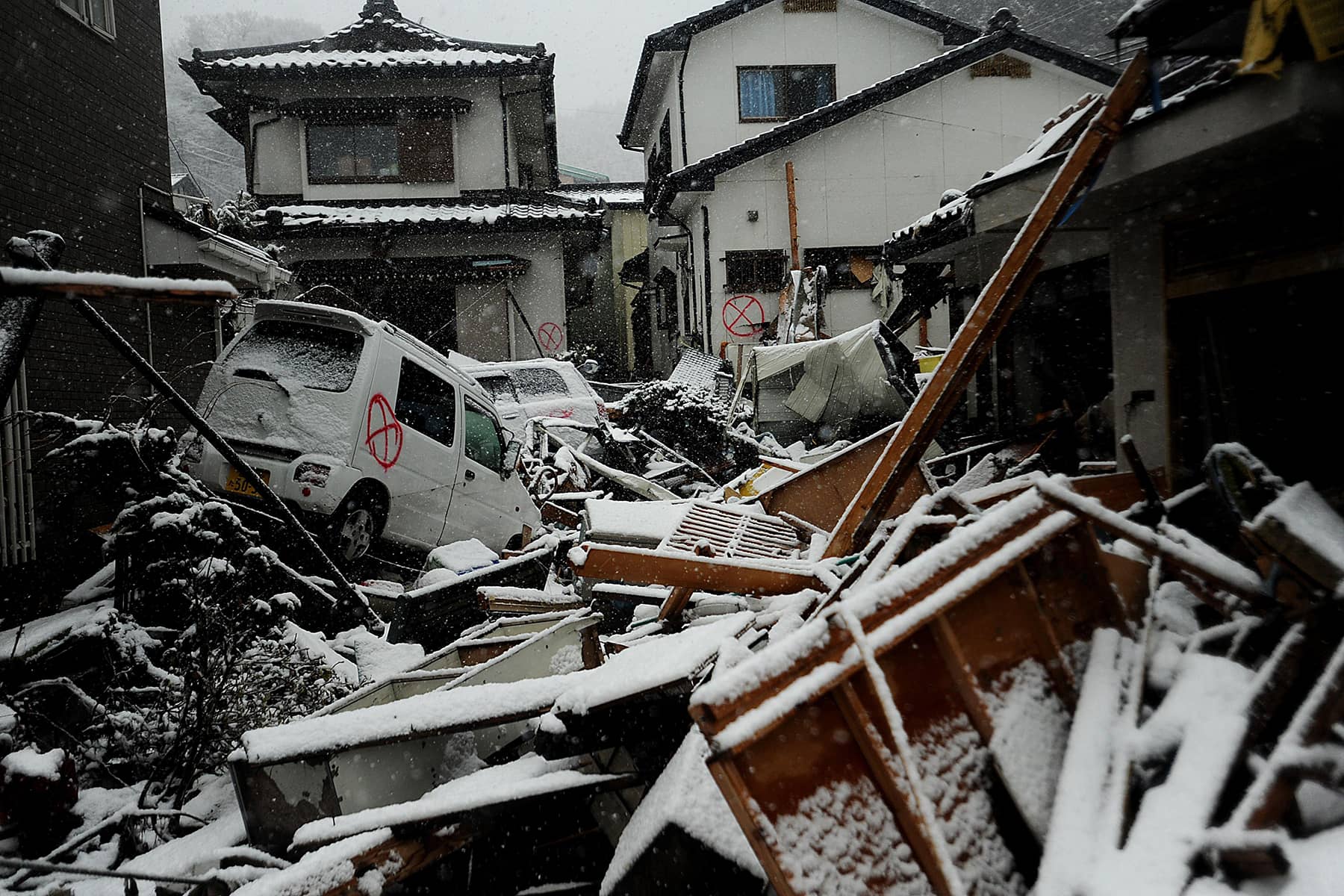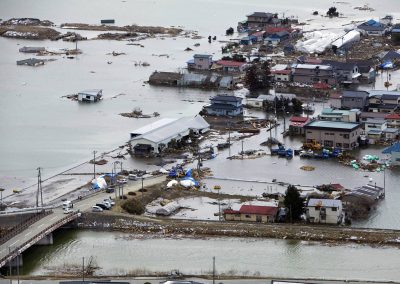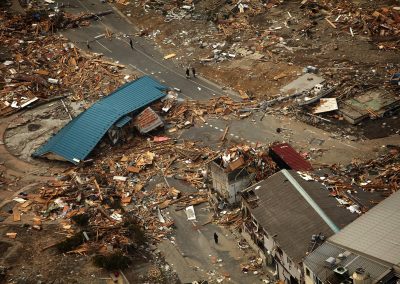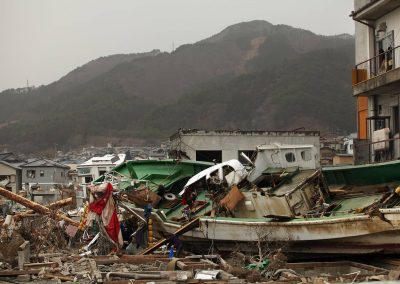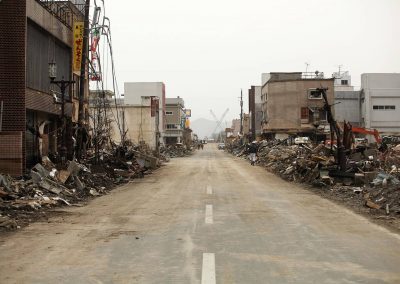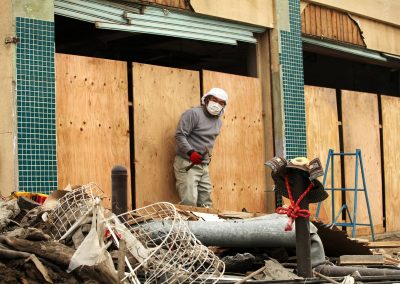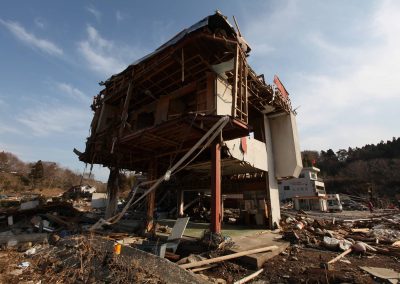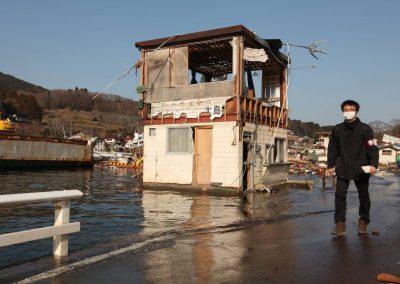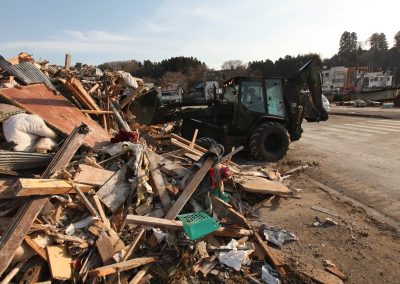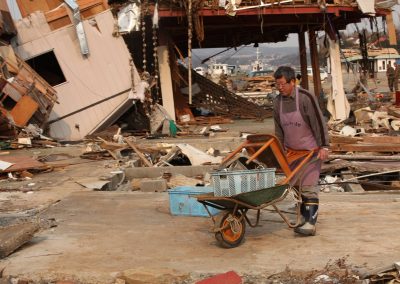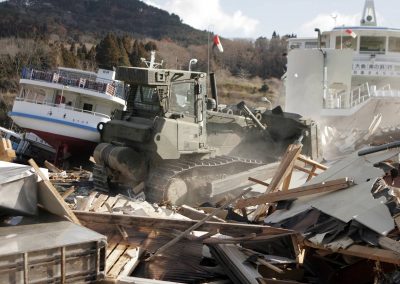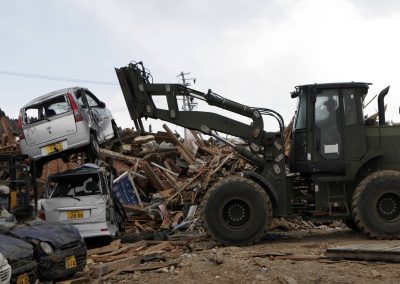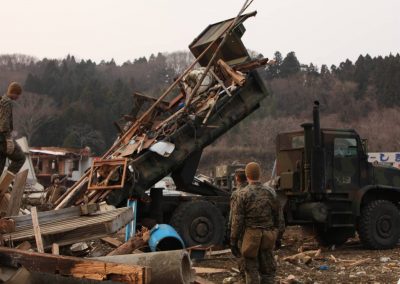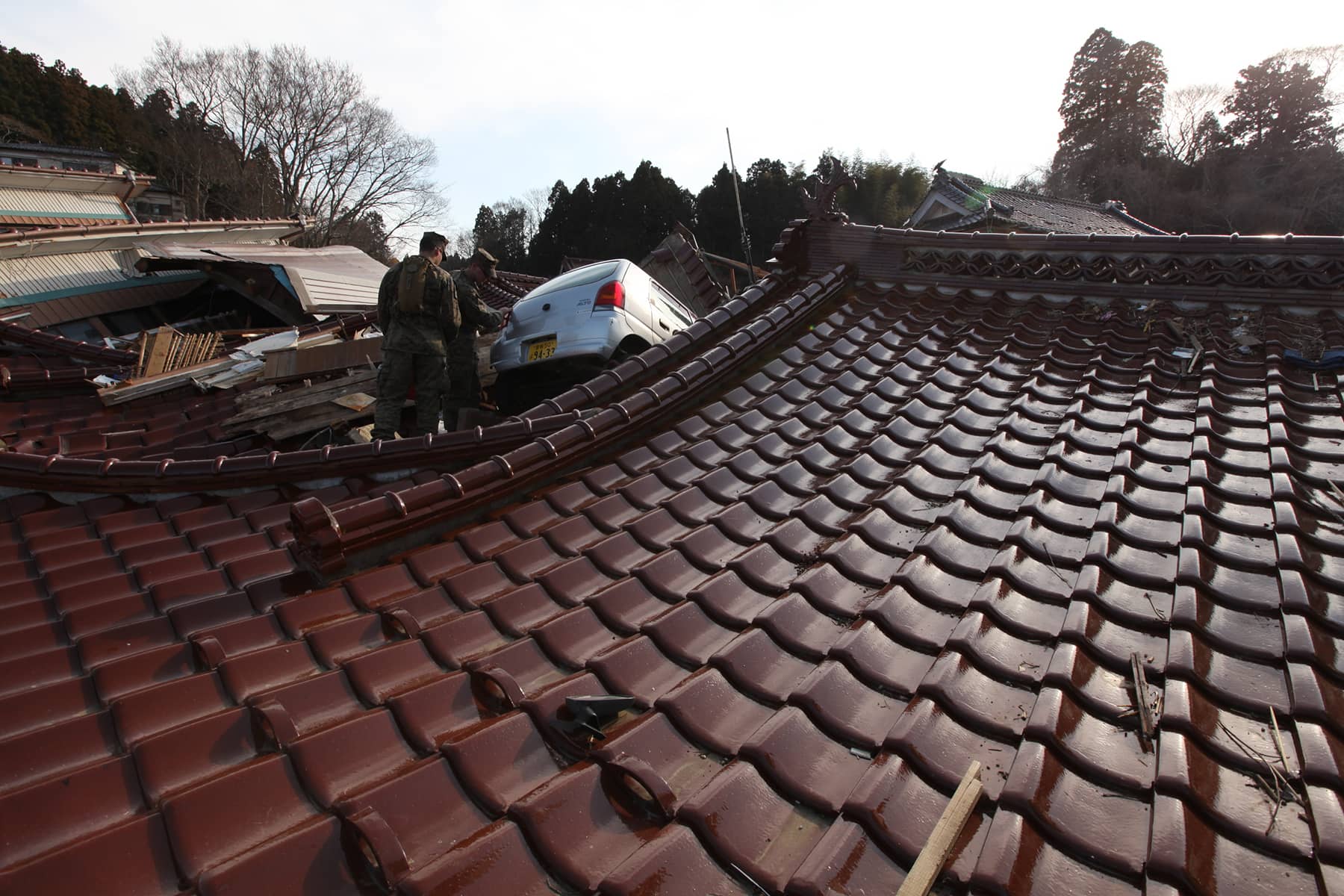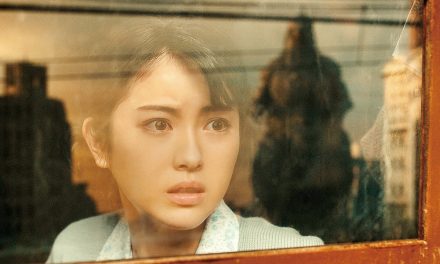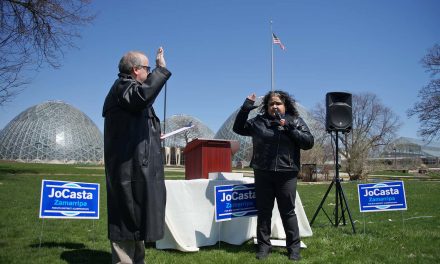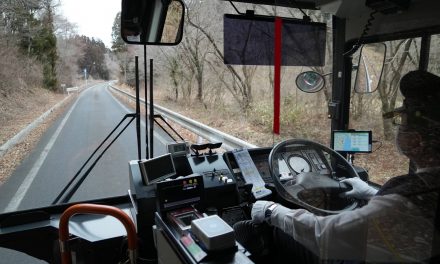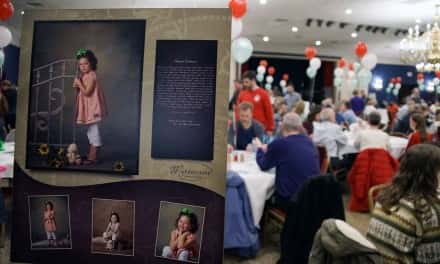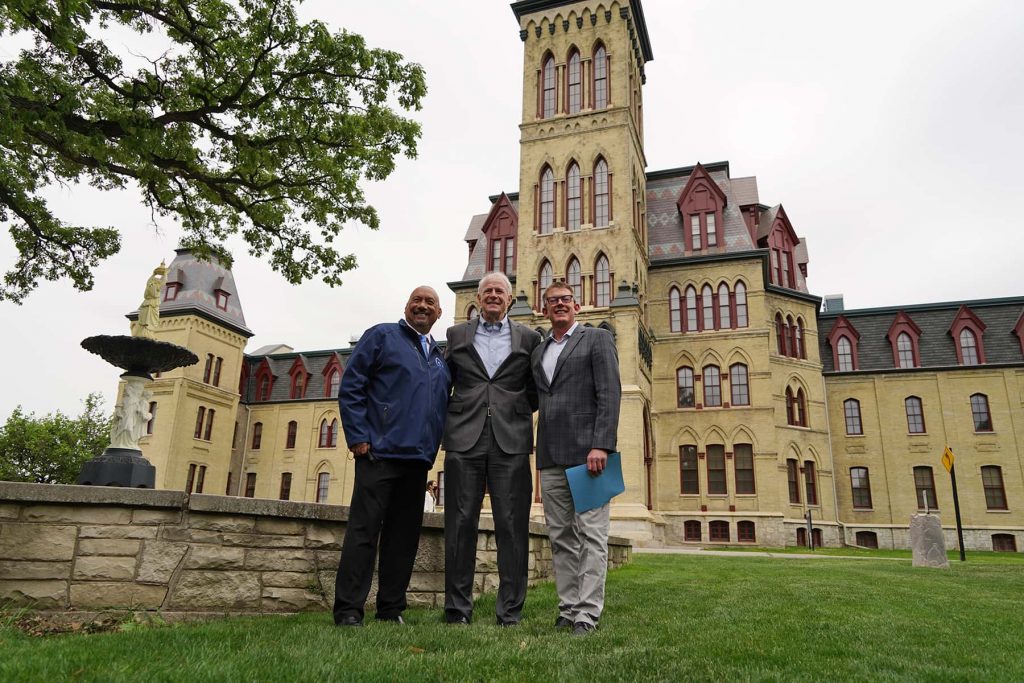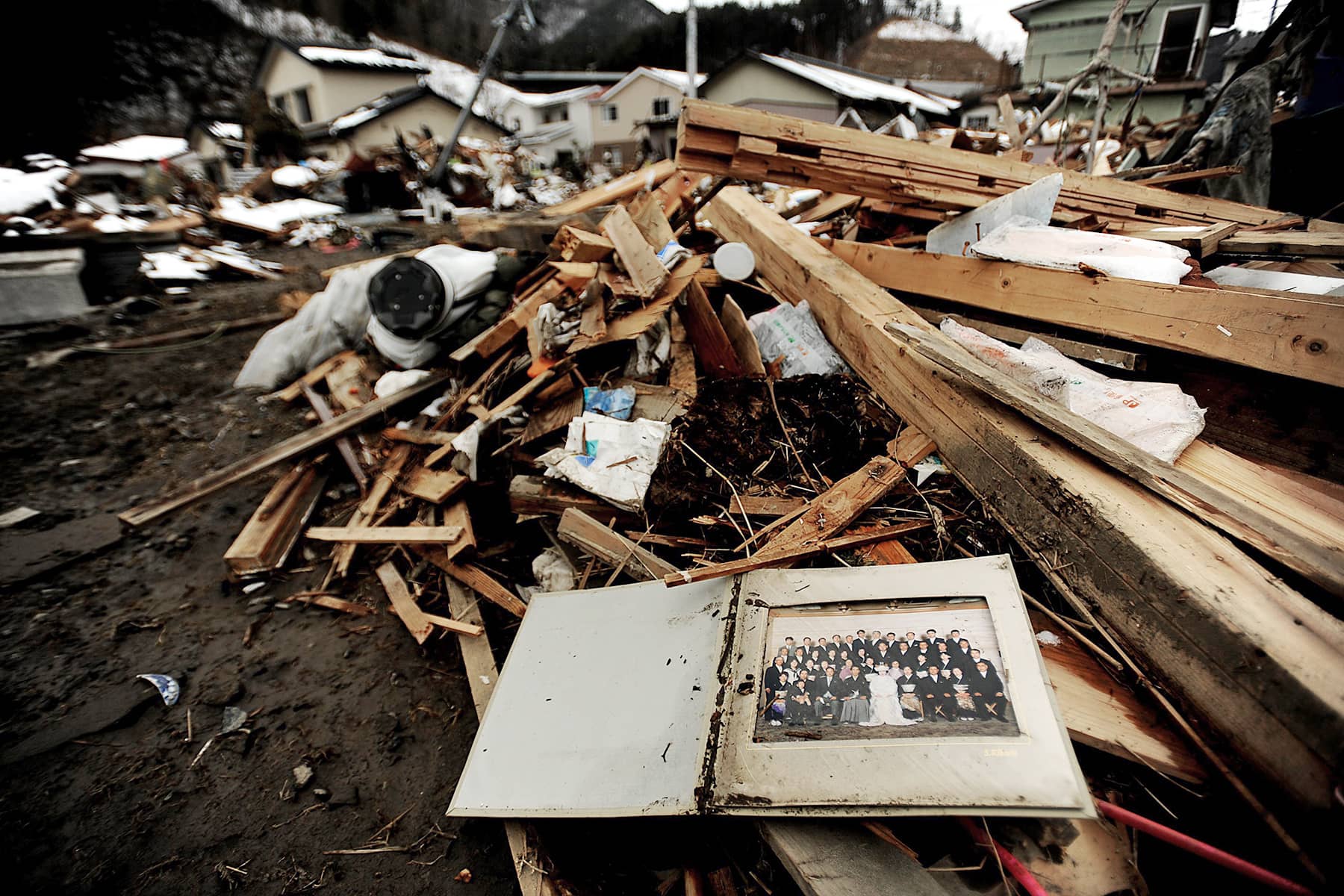
The city of Futaba, which hosted part of the Fukushima Daiichi Nuclear Plant, saw the evacuation of all 7,000 residents after the 2011 meltdown. The massive earthquake, devastating tsunami, and subsequent radiation left more than 18,000 people dead or missing along Japan’s northeastern coast.
In response to the regional destruction on March 11, 2011, the United States Armed Forces launched Operation Tomodachi in collaboration with the Japan Self-Defense Forces. Named “Tomodachi,” meaning “Friend” in Japanese, the humanitarian mission involved significant search and rescue efforts, medical assistance, and the delivery of essential supplies to the affected communities which helped stabilize the disaster-affected areas.
Coinciding with the March 11 anniversary in 2021 and 2022, the Associated Press spoke with people affected by Japan’s 2011 triple disaster – earthquake, tsunami, and nuclear meltdown. For many who experienced that trauma more than a decade ago, their future remained on hold. While the Japanese government has spent close to $300 billion on environmental reconstruction, it has invested only a fraction in things like mental health services.
The original AP interviews asked how far the survivors had come in their personal journeys to rebuild their lives, and how much more needed to be done. In March 2024, Milwaukee Independent spoke with other survivors around the Tōhoku region, compiling and updating those interviews for this report.
A PLACE OF COMFORT. Hazuki Sato was 10 when she fled from her elementary school in Futaba, home of the wrecked nuclear plant. Her classmates have scattered over the years, but she remains hopeful that opportunities will come along for them to reconnect. Despite horrifying memories of escaping from her classroom, she still considers Futaba her home. After studying outside the region for eight years, Sato works remotely for her hometown from an office in Iwaki, another city in the Fukushima prefecture. Sato has fond memories of Futaba, like a family barbecue, riding a unicycle after school, and snacking with friends at a childcare center while waiting for her grandma to pick her up.
“I want to see this town become a place of comfort again.” – Hazuki Sato
WHO WANTS TO COME BACK? About 6 miles south of the wrecked nuclear plant, rice farmer Naoto Matsumura defied a government evacuation order a decade ago. He stayed on his farm to protect his land and the cattle abandoned by neighbors. He is still there. Most of the town of Tomioka reopened in 2017. But dozens of neighboring homes around Matsumura remained empty, or lots were demolished with anticipation of new construction. It left the area pitch dark and silent at night. The Fukushima prefecture town’s main train station got a facelift. A new shopping center was built. But just over 10% of Tomioka’s former population of 16,000 has returned after massive amounts of radioactive material spewed from the plant, which forced evacuations from the town and other nearby areas. Parts of the town still remain off-limits, houses, and shops stand long abandoned. Because it took six years to lift the evacuation order, many townspeople already found jobs and homes elsewhere. Only half of the former residents said they had decided never to return, according to a town survey in 2022. The situation has been true across the region. In Tomioka, radioactive waste from decontamination efforts in the town continues to be stored in a no-go zone. For company, Matsumura has several cows, a pony, and a family of hunting dogs that help him chase away wild boars. The cows are descendants of those from neighboring farms that he has kept, as a protest, after the government issued an order to destroy thousands because of radiation fears.
“It took hundreds of years of history and effort to build this town. It was destroyed instantly. I grew up here, but this is nothing like a home anymore. Who wants to come back to a place like this? Sadly, I don’t see much future for this town. What else can I do? I will stay here until the end of my life.” – Naoto Matsumura
STARTING LINE AGAIN. Just a month after a tsunami as high as 55 feet smashed into the city of Rikuzentakata, Michihiro Kono took over his family’s soy sauce business. That he was even able to continue the two-century-old business was a miracle, he said. The precious soy yeast was only saved because he had donated some to a university lab. The ninth-generation owner of Yagisawa Shoten Company worked since 2011 to rebuild the business in Iwate Prefecture, and finally replaced the destroyed factory with a new facility in 2020. It was constructed on the same ground where his family started making soy sauce in 1807. He has even launched a soy sauce named “Miracle” in honor of the saved yeast. But challenges remain as his customer base plunged. The city’s population fell by more than 20% to about 18,000, forcing him to build business networks beyond the city. Kono often thinks of the people killed by the tsunami, many of whom he used to discuss town revitalization plans with.
“This is a critical moment to see if I can do something meaningful with my future and to help the rebirth of this town. I was born here, but at my age I’m at the starting line again. I feel driven by my ancestors and all the folks who came before me to make this town great again. I want to do whatever it takes to make them all say ‘Well done, you did it,’ when I see them again in the next life.”– Michihiro Kono
A MISTAKE TO RETURN. An abandoned ramen shop sits next door, and so many houses and buildings around Yasushi Hosozawa have been demolished that the neighborhood looks barren. A retired plumber, Hosozawa had to relocate three times over the past decade. Returning to Futaba was his dream, and he patiently waited while other towns reopened. To his disappointment, the water supply was not reconnected the day he returned. He had to fill plastic containers with water from a friend’s house in a nearby town. Commercial services for daily necessities have improved since then, but remain limited in Futaba. Having conversations with others in town helps Hosozawa pass the time. He looks forward to the spring fishing season and likes to grow vegetables in his garden. But as the seasons pass, Hosozawa wonders if this was the best way to spend his final years.
“Futaba is my home. I’ve wanted to come back since the disaster happened. It was always in my mind. I won’t live much longer, and if I have three to four more years, I’d rather not be in a Futaba like this. Coming back might have been a mistake. Who would want to return to a town without a school or a doctor? I don’t think young people with children will want to come.” – Yasushi Hosozawa
THEIR HOME IS STILL HERE. Yuya Hatakeyama was 14 when he was forced to evacuate from Tomioka after the disaster. The former third baseman for the Fukushima Red Hopes, a regional professional league team, has worked at the Tomioka town hall. But remains reluctant to return to live inside the town, joining the many who commute into it from outside.
“I want to reach out to the residents, especially the younger generation, so they know their home is still here. One day I want to see young families playing catch outside in the yard, like I used to do with my own father.” – Naoto Matsumura
REMEMBERING THE PAST. Atsuko Yamamoto runs a Penguin fast-food store at a food court in the Futaba business community center, but she commutes from another Fukushima town. Despite her deep attachment to her hometown, living there is not possible, she said. The only way to make her business work was to get her food supplies in Iwaki, a business hub for coastal Fukushima where she now lives, and then commute about 40 miles to Futaba. Her mother used to sell donuts and hamburgers from a stand near the train station. It was a popular hangout for local students and a landmark remembered by the Futaba people before the disaster. These days, familiar buildings and houses are increasingly being torn down, and daytime visitors are predominantly new faces.
“I’ve always thought I have to do something for Futaba’s recovery, so I raised my hand when I saw the offer of a space in the food court. When I evacuated, I never imagined I could return to Futaba like this. The city rapidly transformed into an unfamiliar place while I was away, so I hope this store helps former residents feel at home. In our view, the buildings that remind us of our hometown are disappearing, like my friends’ old houses, and it’s extremely sad. I cannot help driving by where demolished homes were once alive with families, even my own. It is too easy to forget over time, so I think I need to feel the pain and remember the past. It’s hard to explain, but I hope people will come back to visit and actually see this place.” – Atsuko Yamamoto
A MEETING PLACE. Takumi Yamada, a worker at Futaba’s only hotel is from nearby Namie town. He spent most of his teenage years outside of Namie after fleeing from his elementary school — while still wearing his indoor classroom shoes — to Saitama, near Tokyo, with his parents and two siblings. After studying elsewhere in Fukushima and Tokyo, Yamada decided to return home to reconnect and learn about an area he hardly remembered. Yamada said he was thrilled when he was working at the hotel’s reception desk and overheard former residents talking about the whereabouts of mutual friends.
“I think it’s great if this hotel becomes a meeting place for former residents. If there are people wondering whether or not to return, I think it’s best that they come and see the situation for themselves.” – Takumi Yamada
It was estimated that 30,000 residents who evacuated from across the Fukushima area are still unable, or unwilling, to return home. Of the 12 nearby towns that were fully or partially designated as no-go zones, Futaba was the last one to allow some people to return to live.
Many Futaba residents were forced to give up their land for the building of a storage area for radioactive waste, and Fukushima Daiichi’s uncertain outlook during its decades-long cleanup makes town planning difficult.
Futaba Project, which helps revitalize the town through tourism, new businesses, and migration from outside Fukushima, has been promoting the growing industry of educational tourism.
“Places with scars of the disaster remain in Futaba. Preserving these sites has allowed visitors to see its reality, and think about the future,” – Hidehiko Yamasaki, Futaba Project
3.11 Exploring Fukushima
- Journey to Japan: A photojournalist’s diary from the ruins of Tōhoku 13 years later
- Timeline of Tragedy: A look back at the long struggle since Fukushima's 2011 triple disaster
- New Year's Aftershock: Memories of Fukushima fuels concern for recovery in Noto Peninsula
- Lessons for future generations: Memorial Museum in Futaba marks 13 years since 3.11 Disaster
- In Silence and Solidarity: Japan Remembers the thousands lost to earthquake and tsunami in 2011
- Fukushima's Legacy: Condition of melted nuclear reactors still unclear 13 years after disaster
- Seafood Safety: Profits surge as Japanese consumers rally behind Fukushima's fishing industry
- Radioactive Waste: IAEA confirms water discharge from ruined nuclear plant meets safety standards
- Technical Hurdles for TEPCO: Critics question 2051 deadline for decommissioning Fukushima
- In the shadow of silence: Exploring Fukushima's abandoned lands that remain frozen in time
- Spiral Staircase of Life: Tōhoku museums preserve echoes of March 11 for future generations
- Retracing Our Steps: A review of the project that documented nuclear refugees returning home
- Noriko Abe: Continuing a family legacy of hospitality to guide Minamisanriku's recovery
- Voices of Kataribe: Storytellers share personal accounts of earthquake and tsunami in Tōhoku
- Moai of Minamisanriku: How a bond with Chile forged a learning hub for disaster preparedness
- Focus on the Future: Futaba Project aims to rebuild dreams and repopulate its community
- Junko Yagi: Pioneering a grassroots revival of local businesses in rural Onagawa
- Diving into darkness: The story of Yasuo Takamatsu's search for his missing wife
- Solace and Sake: Chūson-ji Temple and Sekinoichi Shuzo share centuries of tradition in Iwate
- Heartbeat of Miyagi: Community center offers space to engage with Sendai's unyielding spirit
- Unseen Scars: Survivors in Tōhoku reflect on more than a decade of trauma, recovery, and hope
- Running into history: The day Milwaukee Independent stumbled upon a marathon in Tokyo
- Roman Kashpur: Ukrainian war hero conquers Tokyo Marathon 2024 with prosthetic leg
- From Rails to Roads: BRT offers flexible transit solutions for disaster-struck communities
- From Snow to Sakura: Japan’s cherry blossom season feels economic impact of climate change
- Potholes on the Manga Road: Ishinomaki and Kamakura navigate the challenges of anime tourism
- The Ako Incident: Honoring the 47 Ronin’s legendary samurai loyalty at Sengakuji Temple
- "Shōgun" Reimagined: Ambitious TV series updates epic historical drama about feudal Japan
- Enchanting Hollywood: Japanese cinema celebrates Oscar wins by Hayao Miyazaki and Godzilla
- Toxic Tourists: Geisha District in Kyoto cracks down on over-zealous visitors with new rules
- Medieval Healing: "The Tale of Genji" offers insight into mysteries of Japanese medicine
- Aesthetic of Wabi-Sabi: Finding beauty and harmony in the unfinished and imperfect
- Riken Yamamoto: Japanese architect wins Pritzker Prize for community-centric designs
MI Staff (Japan), with Mari Yamaguchi and Haruka Nuga
Eugene Hoshiko (AP), Hiro Komae (AP), Koji Ueda (AP), and Jeremy Lock, Matthew Bradley, Daniel St. Pierre, Antoine T. Robinson, Daniel Sanford, Leo Salinas, Brennan O’Lowney, Ethan Johnson, Garry J. Welch as members of Operation Tomodachi (via Department of Defense)
3.11 Exploring Fukushima: The Tōhoku region of Japan experienced one of the worst natural disasters ever recorded when a powerful earthquake was followed by a massive tsunami, and triggered an unprecedented nuclear crisis in 2011. With a personal connection to the tragedies, Milwaukee Independent returned for the first time in 13 years to attend events commemorating the March 11 anniversary. The purpose of the journalism project included interviews with survivors about their challenges over the past decade, reviews of rebuilt cities that had been washed away by the ocean, and visits to newly opened areas that had been left barren by radiation. This special editorial series offers a detailed look at a situation that will continue to have a daily global impact for generations. mkeind.com/exploringfukushima

